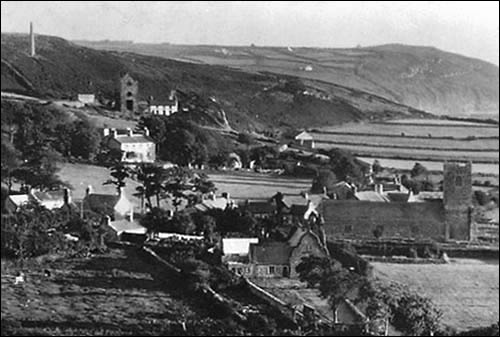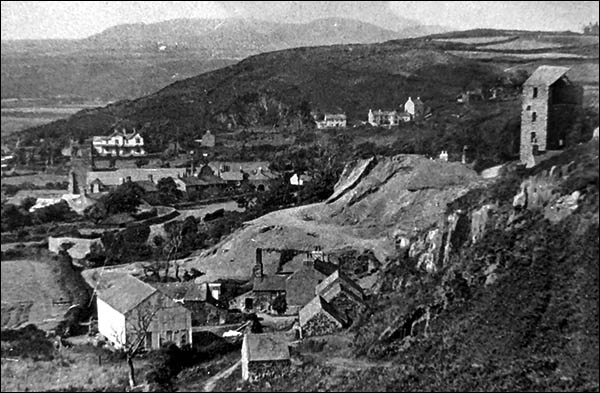Lead mine chimney, Llanengan
The tall chimney above the village is a remnant of the Tan’rallt lead mine, also known as the Porth Neigwl (or ‘Porthnigwl’) mine. The nearby tips are waste from the mine.
 The mining work was started c.1869 by Evan Lloyd Edwards (originally from Beddgelert) and his son Edward. Both had extensive mining experience from their years in Dyffryn Nantlle’s copper industry. Although many doubted their venture at the time, their efforts were justified when lead was found. Some experts said it was the best vein of pure lead discovered in North Wales for years.
The mining work was started c.1869 by Evan Lloyd Edwards (originally from Beddgelert) and his son Edward. Both had extensive mining experience from their years in Dyffryn Nantlle’s copper industry. Although many doubted their venture at the time, their efforts were justified when lead was found. Some experts said it was the best vein of pure lead discovered in North Wales for years.
Soon their investment drew the attention of London adventurers. Evan and Edward were offered a fortune. But despite investing significantly in the structure of the mine, the new company failed to make a success of their venture.
Then Thomas Grundy, a wealthy Cornishman, saw his opportunity to develop the workings. Although there are no detailed accounts, it’s believed that more than 400 tonnes of lead were dispatched through Porth Fawr, south of Abersoch, in the earlier years of his enterprise. The ore went to places such as Ellesmere Port, Cheshire, for processing. By 1876 underground water became a problem, and the work had to be temporarily stopped.
 A larger pump, steam powered, was installed in 1878 inside the tall building visible in the photos. You can see another photo of the building on our page about the large house just below the mine site.
A larger pump, steam powered, was installed in 1878 inside the tall building visible in the photos. You can see another photo of the building on our page about the large house just below the mine site.
The stand-alone chimney was built for the modernised mine. By now the shaft was 80 fathoms (c.50 metres) deep. The underground levels stretched eastwards towards Porth Fawr and westwards towards Porth Neigwl.
Around 60 workers were employed (several from Cornwall) and c.450 tonnes were raised. The mine closed in 1883 due to the deteriorating quality of the lead ore and coal for the pumping engine was expensive. The chimney is listed Grade II.
Near the chimney are the remains of a prehistoric hillfort, known as Castell. Archaeologists believe it was a defended settlement in the Iron Age.
With thanks to the Diogelu Enwau Llanengan group

